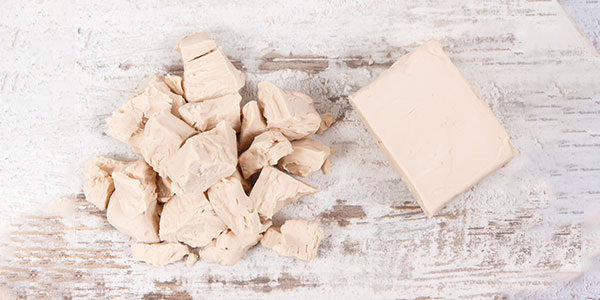
Yeast in this context means baked yeast with the Latin name Saccharomyces cerevisiae. It is not an excipient with an E-number but rather a food. In its inactive form, the yeast cells are dead, this is where it can act as an excipient. The yeast is technically just a protein-rich nutrient added to an active ingredient such as chromium or selenium.
Including an example of chromium yeast production. The principle can be transferred to also apply to selenium yeast.
Live yeast cells are fed with inorganic chromium chloride. Chromium is incorporated and integrated into the cell walls of the yeast and is included in it's proteins, thereby changing it to natural organic chromium yeast. The chromium yeast is pasteurized, whereby the yeast cells die. The chromium-containing yeast cells are cleaned, spray-dried, pulverized and compressed into tablets.
If the tablets are taken, the chromium-containing proteins of the yeast are broken down into chromium-containing peptides and amino acids in the intestine. Chromium peptides and amino acids pass easily through the intestinal wall (in contrast to chromium from, for example, inorganic chromium chloride and chromium picolinate, are predominantly taken up by passive diffusion)
The amount of yeast powder used as an excipient has no effect on the growth of the yeast fungus Candida albicans in the body. The natural variations of protein in the diet far exceed the protein content of the yeast powder.
